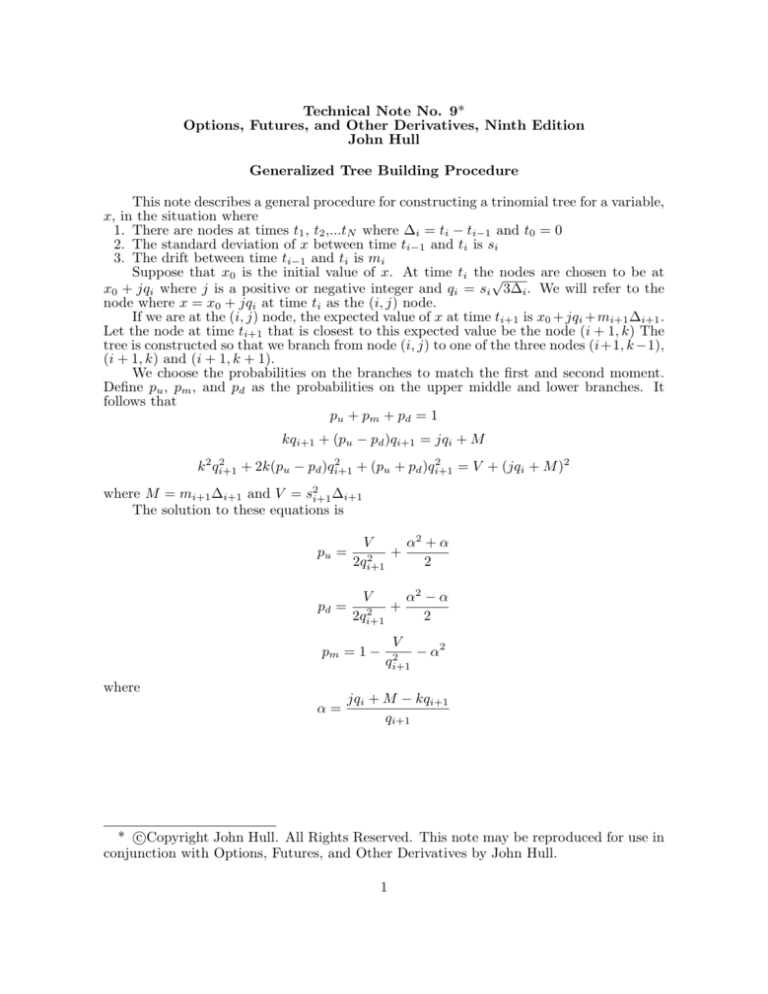
Technical Note No. 9*
Options, Futures, and Other Derivatives, Ninth Edition
John Hull
Generalized Tree Building Procedure
This note describes a general procedure for constructing a trinomial tree for a variable,
x, in the situation where
1. There are nodes at times t1 , t2 ,...tN where ∆i = ti − ti−1 and t0 = 0
2. The standard deviation of x between time ti−1 and ti is si
3. The drift between time ti−1 and ti is mi
Suppose that x0 is the initial value of x. At time ti the√nodes are chosen to be at
x0 + jqi where j is a positive or negative integer and qi = si 3∆i . We will refer to the
node where x = x0 + jqi at time ti as the (i, j) node.
If we are at the (i, j) node, the expected value of x at time ti+1 is x0 +jqi +mi+1 ∆i+1 .
Let the node at time ti+1 that is closest to this expected value be the node (i + 1, k) The
tree is constructed so that we branch from node (i, j) to one of the three nodes (i+1, k −1),
(i + 1, k) and (i + 1, k + 1).
We choose the probabilities on the branches to match the first and second moment.
Define pu , pm , and pd as the probabilities on the upper middle and lower branches. It
follows that
pu + pm + pd = 1
kqi+1 + (pu − pd )qi+1 = jqi + M
2
2
2
k 2 qi+1
+ 2k(pu − pd )qi+1
+ (pu + pd )qi+1
= V + (jqi + M )2
where M = mi+1 ∆i+1 and V = s2i+1 ∆i+1
The solution to these equations is
pu =
V
α2 + α
+
2
2qi+1
2
pd =
V
α2 − α
+
2
2qi+1
2
pm = 1 −
where
α=
V
2
qi+1
− α2
jqi + M − kqi+1
qi+1
c
* Copyright
John Hull. All Rights Reserved. This note may be reproduced for use in
conjunction with Options, Futures, and Other Derivatives by John Hull.
1






